matt harvey art
Portrait paintings, art demonstrations, figurative painting, landscapes
Video of 1st glaze on underpainting ‘After Bouguereau’
Posted on June 29, 2018
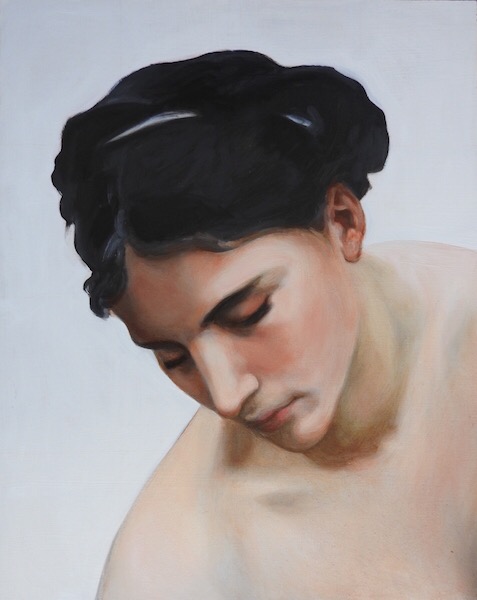
I have just finished the first glaze in oil paints on my grisaille underpainting. This short video project was all about trying to work out how Bouguereau made his paintings, something I have often wondered about.
His works have a particular translucent quality and it was my mission to try and fathom the processes behind this. I think the only real way one can do that is to use the glazing technique over a grisaille. Of course you may get an idea of how it was done using different painting methods or materials but I wanted to stick as closely as possible to his generally agreed method of glazing.
The only real way to understand another artist’s technique is to try and do it oneself. I have not copied many works in my art practice but this has been an invaluable exercise in understanding glazing generally. That is my real and only goal actually; to find a way to develop my own practice with glazing in my paintings. But in the process I hope to leave a course of videos that might enable anyone to achieve similar results to Bouguereau with a little practice. I feel that actually this technique is deceptively simple, but I am still trying to work out the most efficient way of doing it. If you look at Caravaggio’s paintings you can see that once the underpainting was done it was a small step to add some colour, although being able to do it is another matter entirely.
I still feel that anyone can begin to approach painting in the same way as these artists, it just needs practice.
This piece obviously needs some more work to get close to Bouguereau’s, but its only the first glaze, so I’m really looking forward to doing the second glaze and more. I’m thinking of getting a print of the grisaille and trying all over again, and that way I think I might actually crack it, based on lessons learned so far. It was never about making a perfect copy, only trying to come close to the original so as to learn the process generally.
I’m still getting used to filming myself working. The hardest thing about it is making room for the painting and the palette, where I would normally be much closer to the painted surface. I normally spend the whole time panicking!
Portrait painting from grisaille underpainting to fourth glaze
Posted on November 23, 2017
Here are a selection of photos showing the completed glazes done over the grisaille underpainting in this portrait commission.

The first layer, called a grisaille as its painted in grey, using Titanium White and Ivory Black
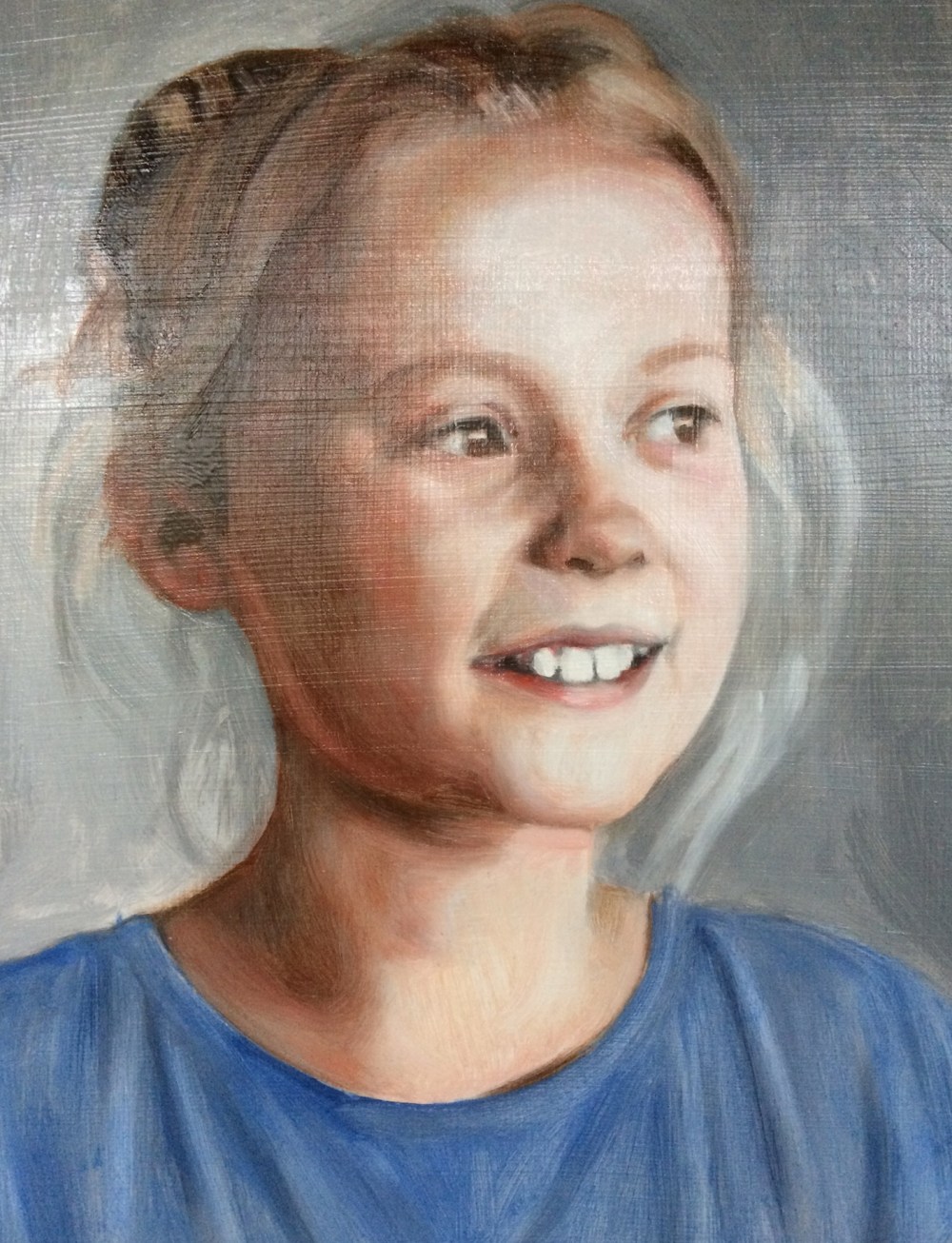
The first glaze which was painted in roughly an hour. This is the subject of a film in 4 parts, showing the 1st glaze being painted in oils
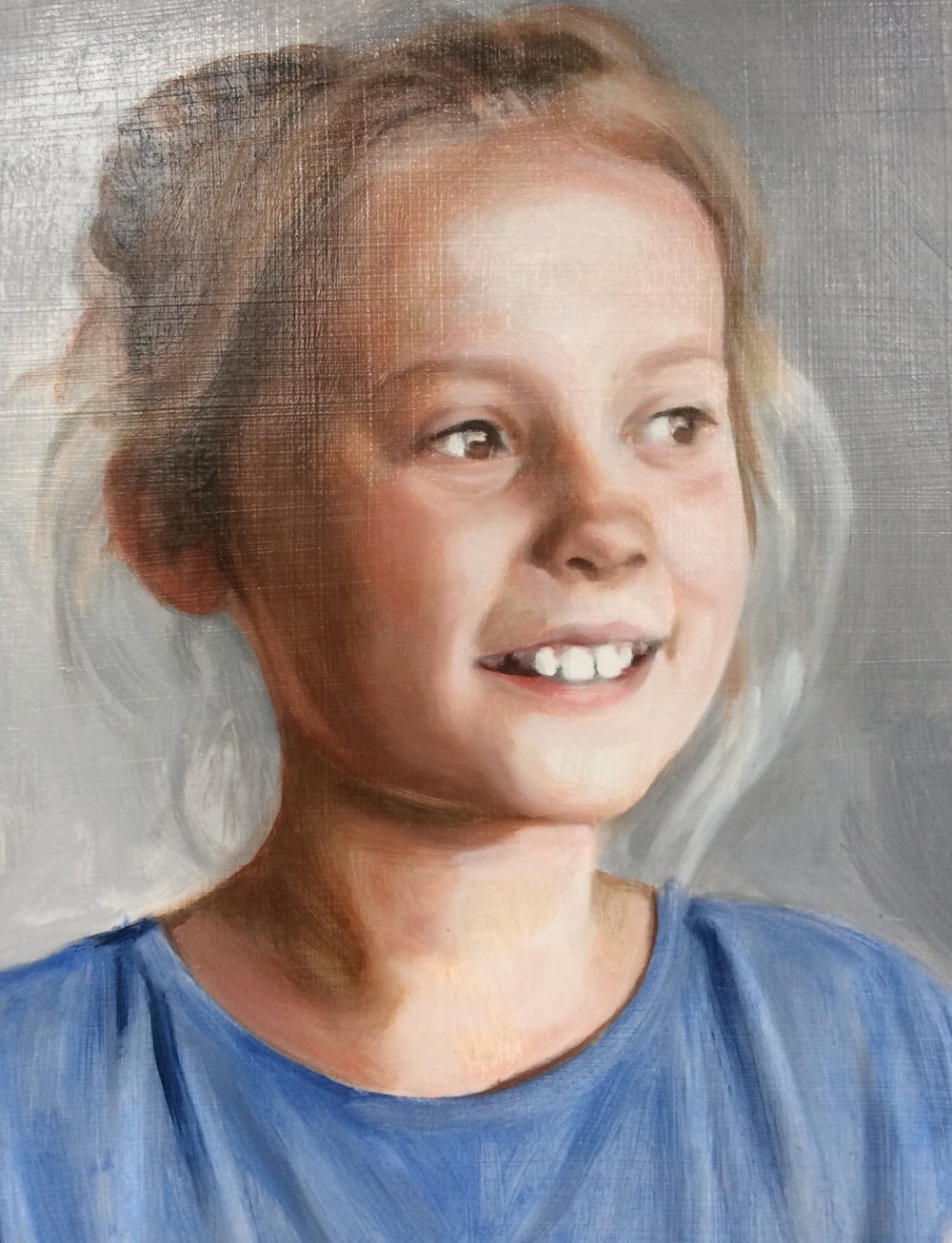
The second glaze, painted after a couple of days when the first glaze had fully dried. I use M. Graham’s Walnut Alkyd medium. The alkyd accelerates the drying, otherwise the oil takes at least a week to be dry enough to paint the next glaze.
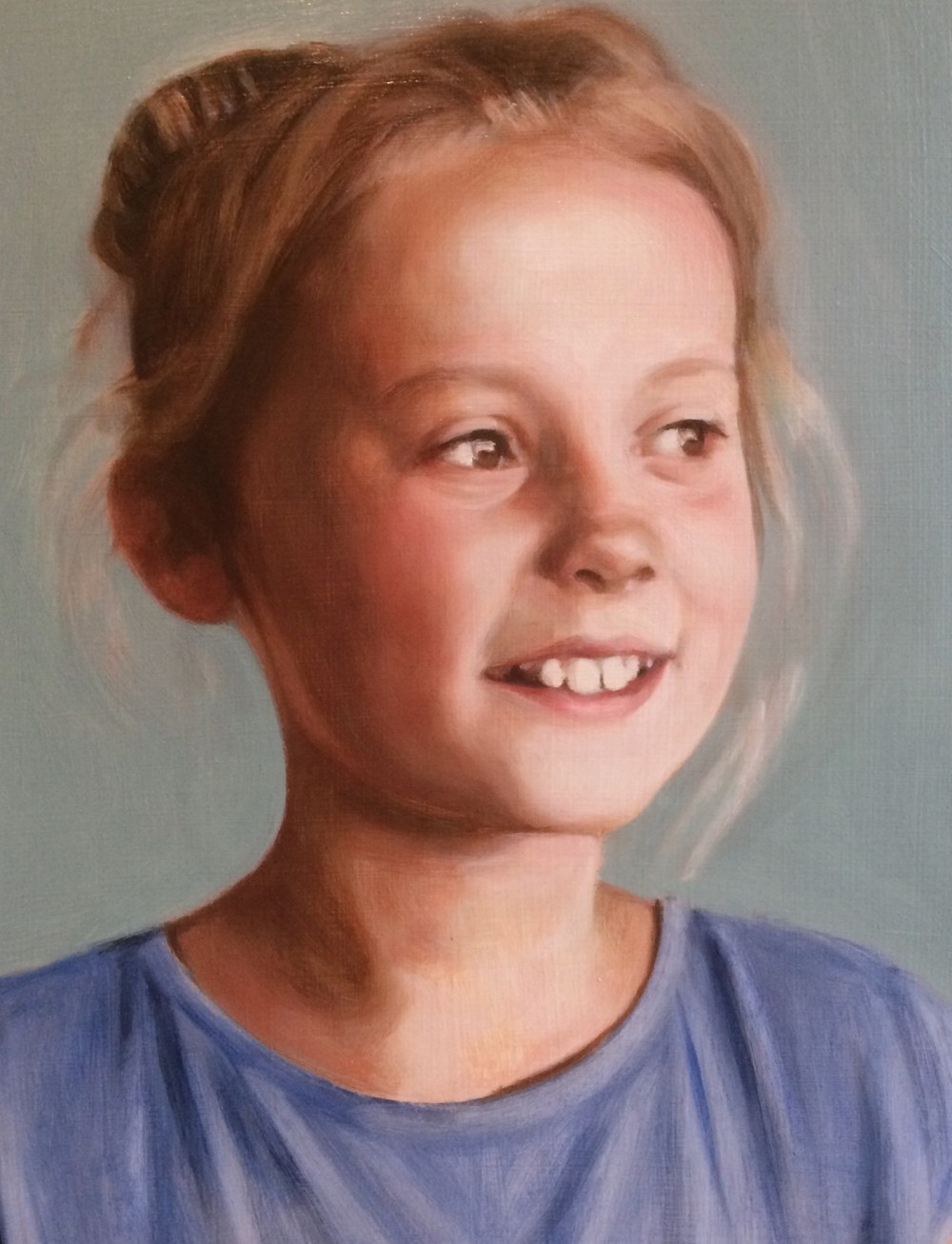
The third oil glaze shows the colours getting richer. I continue to model the forms of the portrait while I paint the glazes.
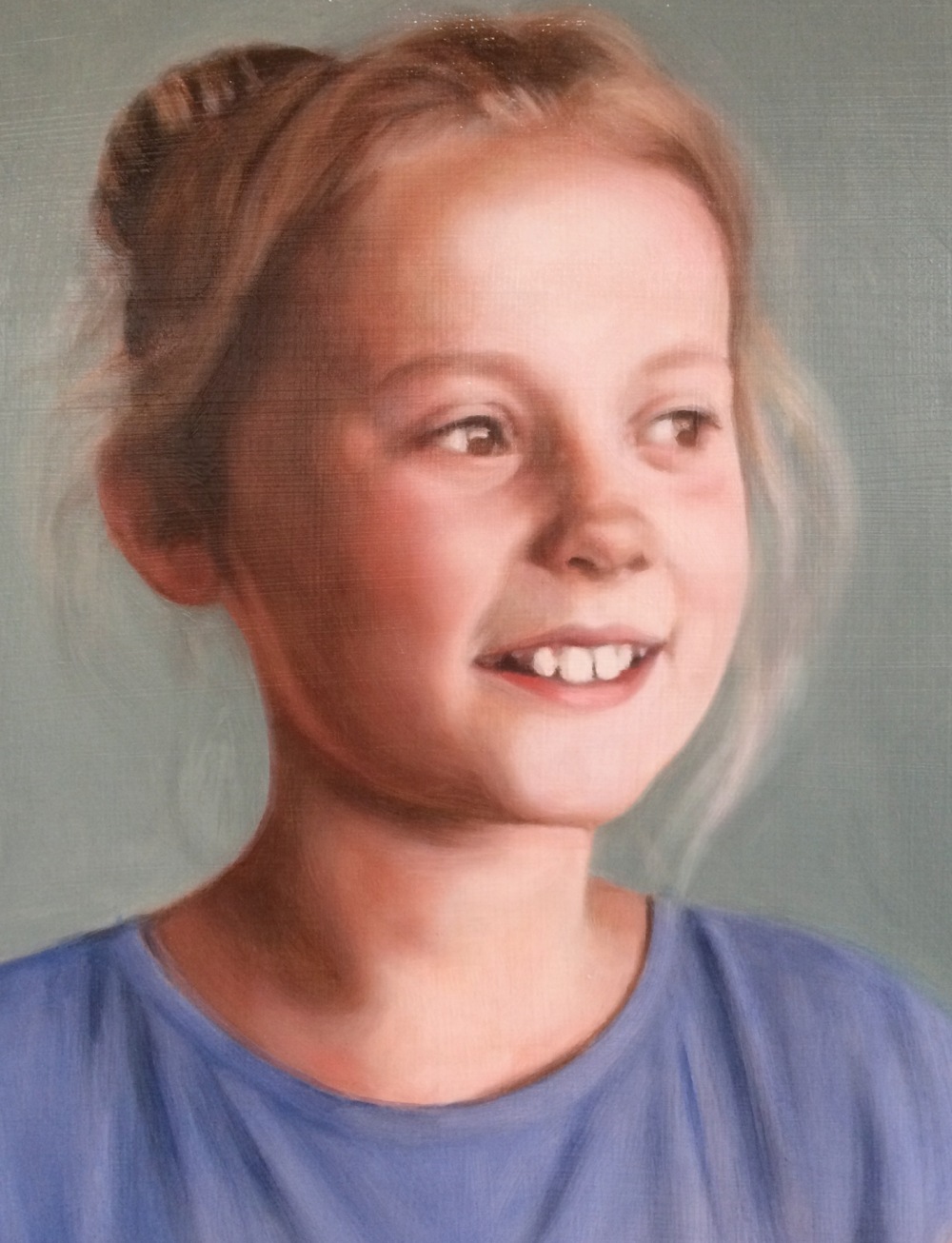
4th glaze
Portrait painting video demonstration
Posted on November 21, 2017
My latest film, another shot while putting on the first glaze over a grisaille underpainting, is now finished and on youtube. Here’s a link to the first installment:
It’s been an interesting experience filming myself working, and quite strange to watch it back as I’ve never seen myself working before. I wanted to make an authentic account of working with this method, and create the film I was looking for when trying to learn how to do it myself. Of course thats a process that never stops!
Portrait painting commission – grisaille layer waiting for the first glaze
Posted on November 2, 2017
This is the first stage, the grisaille. I will be posting a video of the first glaze in a few days. The sitter is the sister of the earlier portrait posted. I will be able to continue modelling the forms as I glaze. I have talked about this elsewhere but the drawing never stops while glazing is taking place, each glaze revealing new areas to develop in the painting. The grisaille is not perfectly formed but is enough to form an anchor for the rest of the painting. Hue or colour is in itself drawing and form and all the imperfections and flat areas are transformed with the glazes.
There are many different ways to make a grisaille underpainting; with black and white as here, or you can make a ‘verdaccio’ which is monotone green and white, or burnt umber and whites. In the future I would like to do some paintings with very limited palettes, like the Zorn palette which has Yellow Ochre, Black, red and white. Or like the one I used at school, Burnt Sienna, Cobalt Blue and White. Just thinking about it is so nostalgic and I fondly remember swimming in warm and cool tones back then.
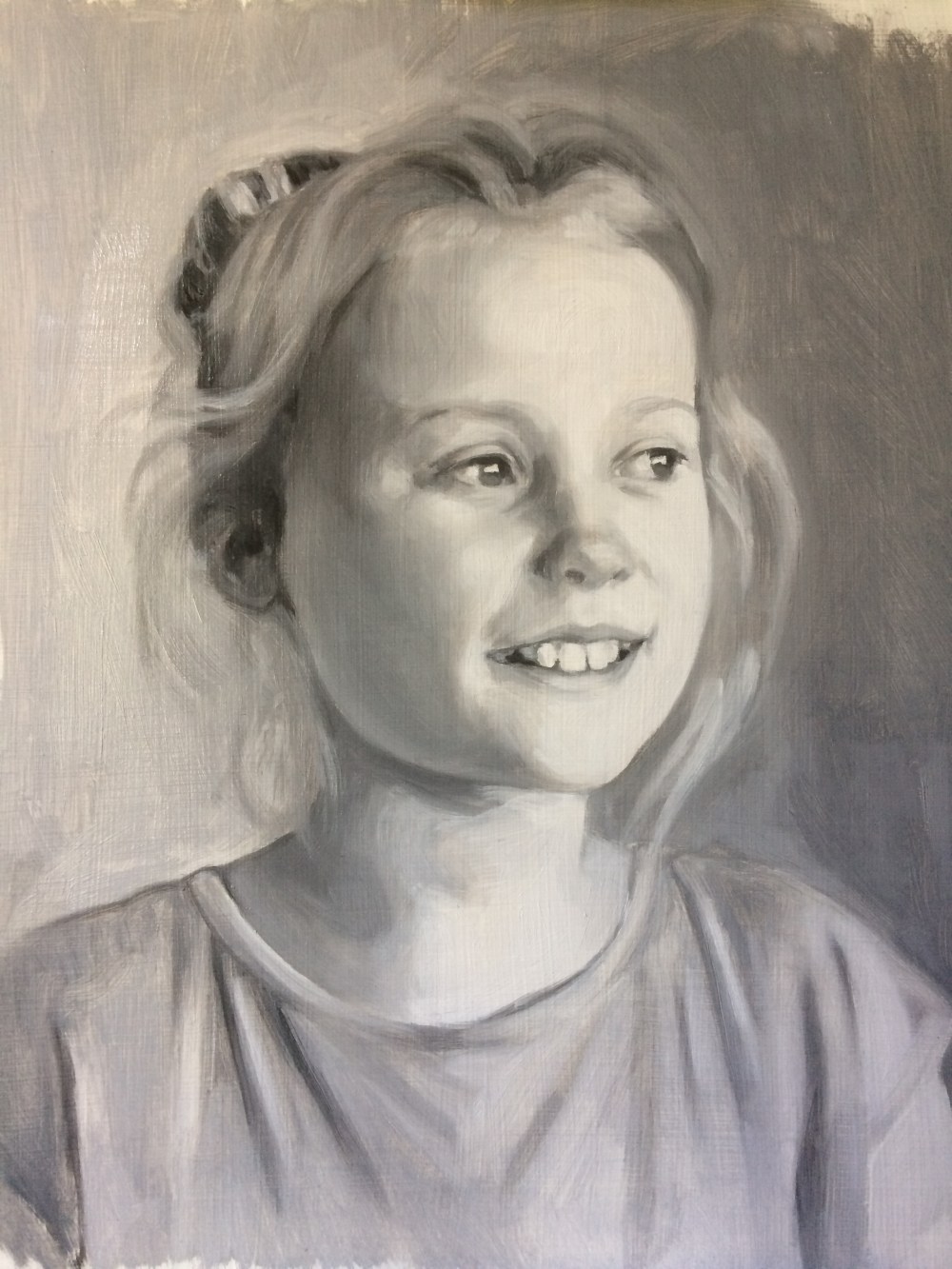
Portrait of Ruby, grisaille painted in oils, Titanium White and Ivory Black
Pencil portrait, spot the difference
Posted on October 24, 2017
I was recently commissioned to do a drawing of two twins. See if you can spot the difference.
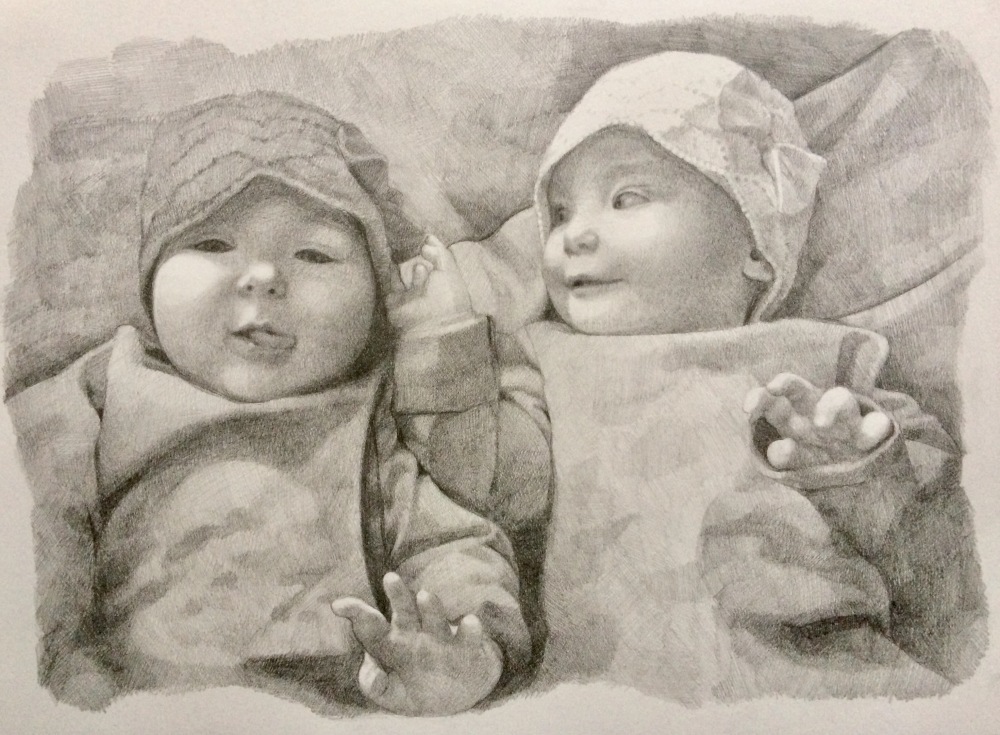
The drawing before
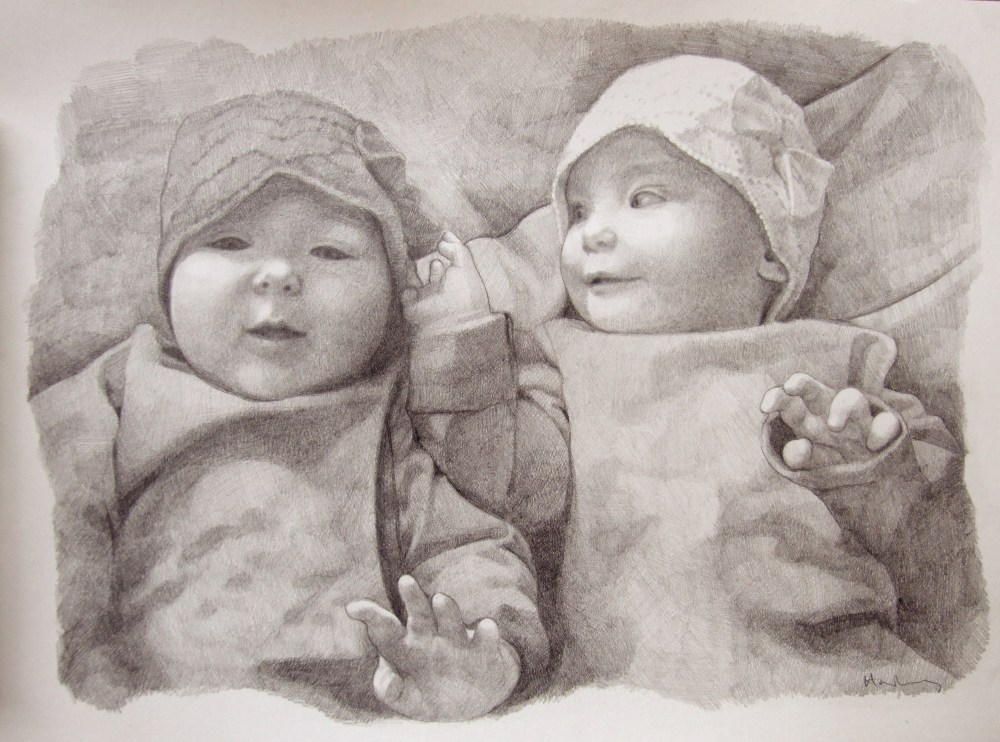
The drawing after adjustments
I worked very closely from the photo provided but the client didn’t like the way the tongue looked in the end, so I had to do a bit of human photoshopping. In hindsight it was never going to work, but I followed the brief and was still happy with the drawing at that stage. Its the first pencil drawing I’ve done for over 20 years and, ahem, nearly 30.. Still working with a crosshatch style. Old habits really do die hard with art. As I wrote in another blog, Learning to love black, it took me years to shake off the idea that black in a tube was a crime against art.
Anna and Simon portrait
Posted on September 21, 2017
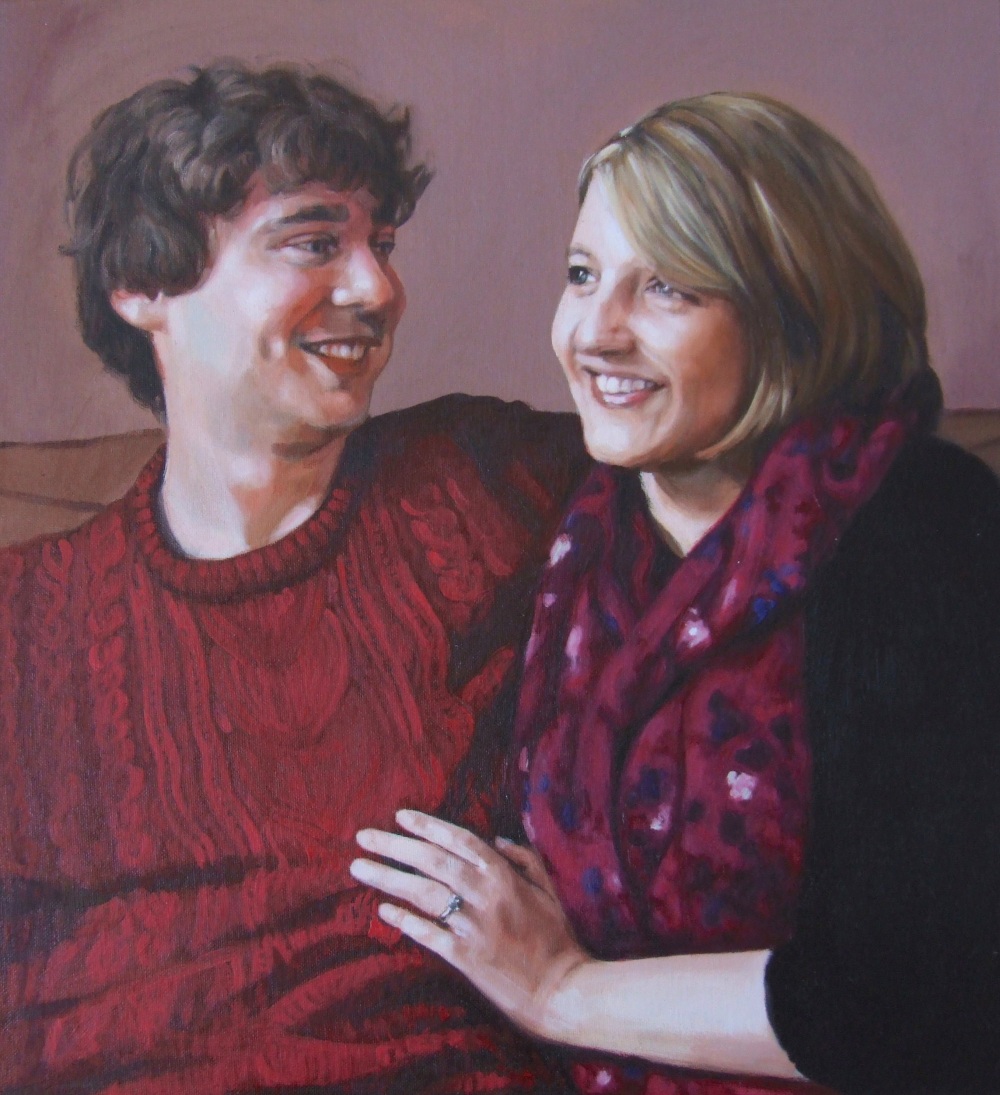
Anna and Simon final version
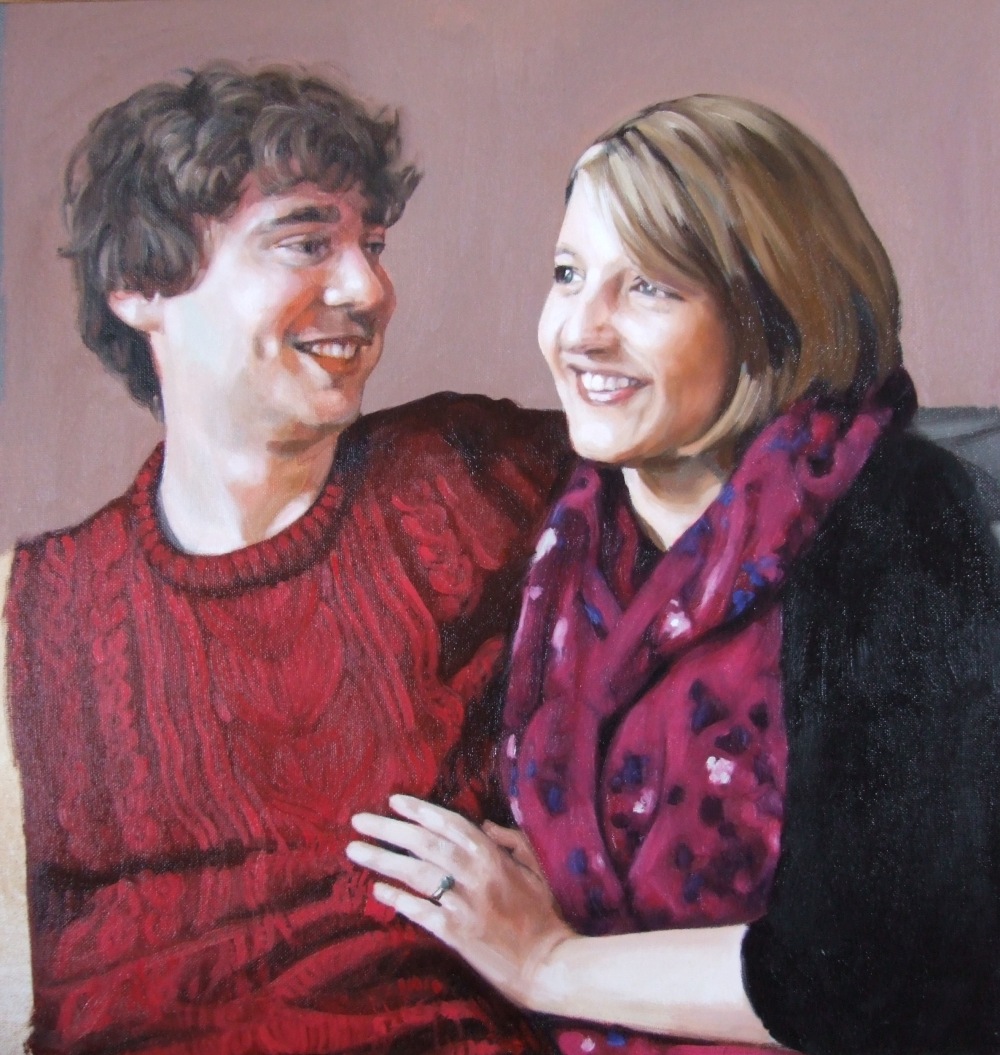
Anna and Simon progress 3 – refining details and adding glazes for depth. I was trying to be economical about the details of Simon’s jumper
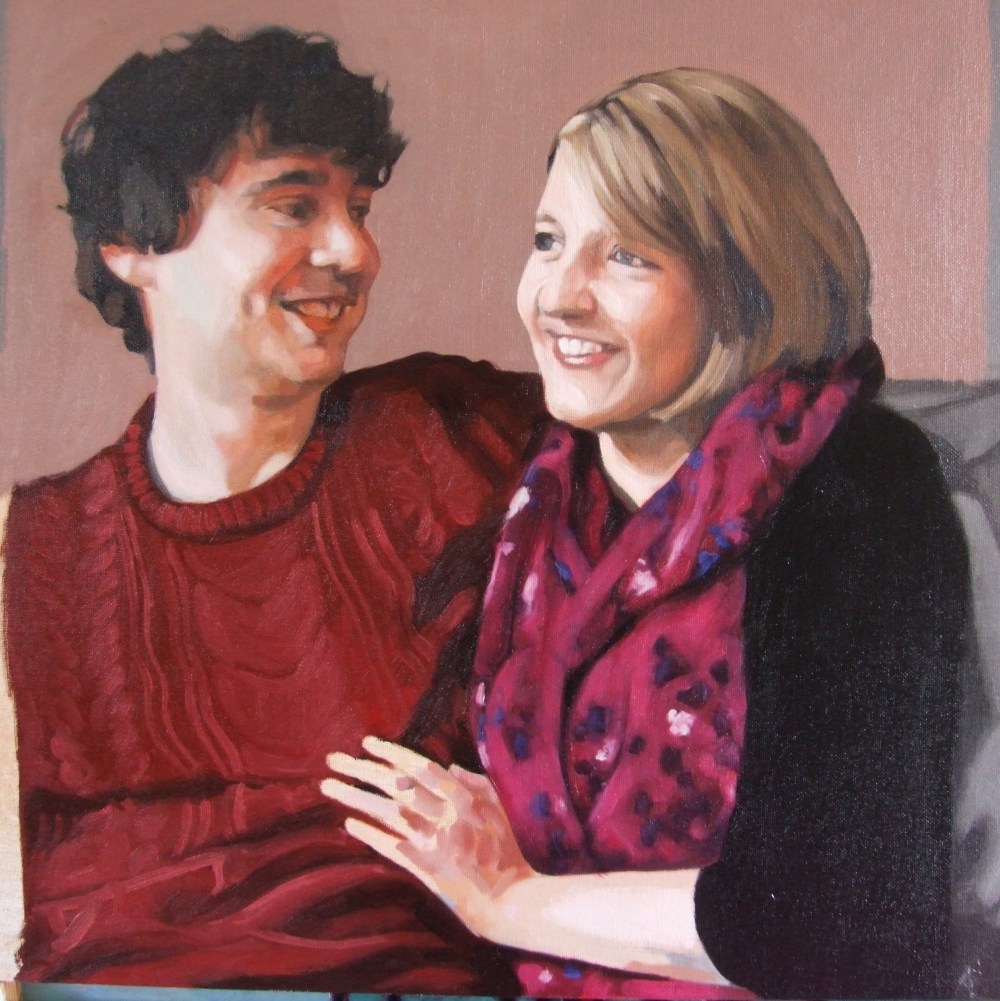
Anna and Simon progress 2 – here I have blocked in all the areas of colour, like a ‘dead layer’
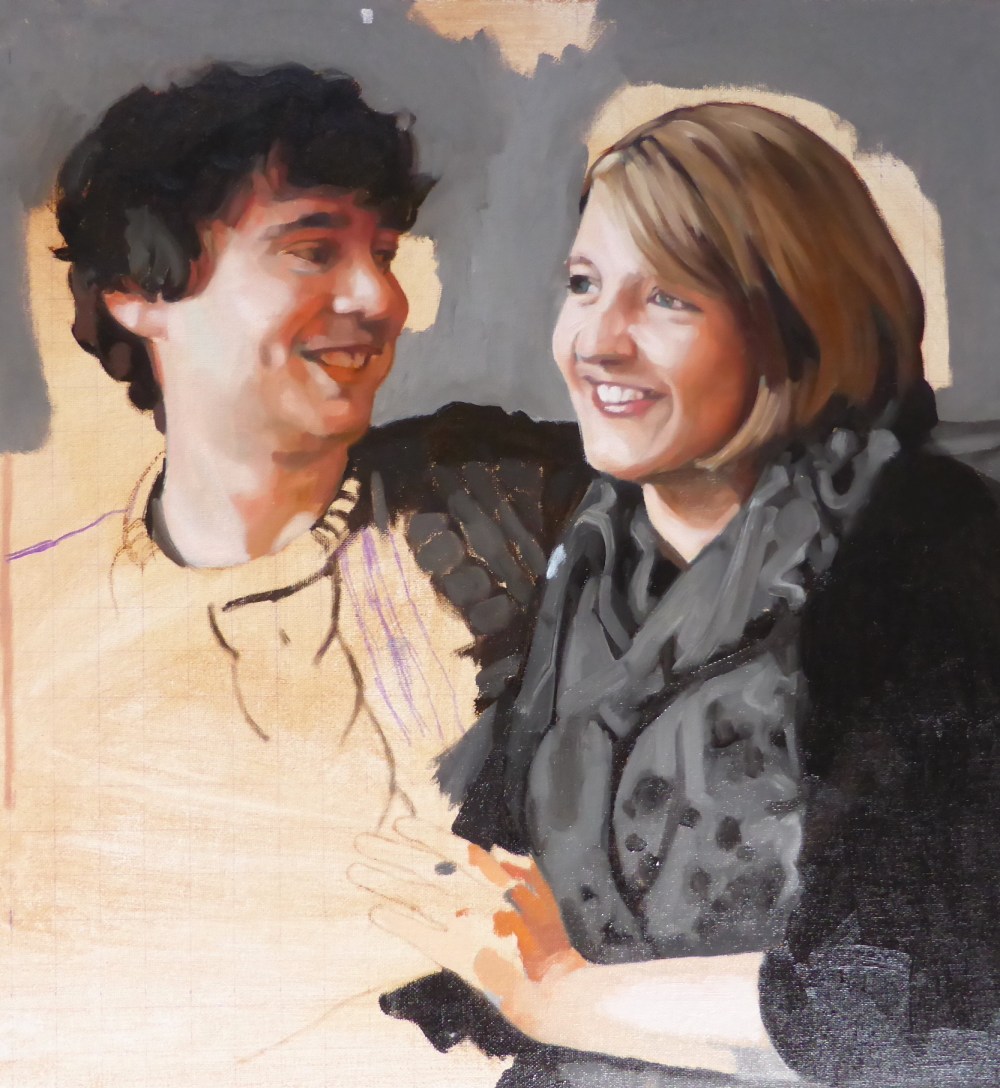
Anna and Simon progress 1- at this stage I abandoned the grisaille and worked colours straight onto the canvas
Here is a double portrait I worked on from a photo, to give an example of the process. I originally painted Anna in a grisaille, and went over the face in colour, having changed tack and wanting concentrate on a single opaque colour layer. It was worked into over a few sessions with additional glazes of colour.
In contrast I painted Simon’s face in colour directly onto primed canvas. I painted a ‘ground’ (or colour stain) on the canvas first, using a couple of coats of acrylic Burnt Umber. You can also see where I drew the grid. I had to leave some of the background unpainted so I could still follow the gridlines! It was one of those rare occasions where I was able to get the drawing right on the first attempt.
When doing commissions this has been something I have avoided trying too much, because when the drawing doesn’t work I can spend many hours going back over the painting, needlessly, because if the drawing was all correct in the first place it wouldn’t have been a problem. Many bad experiences trying to fix paintings like this led me to use the grisaille method, because that is a great way of ensuring the drawing is right before attempting colour.
When I say drawing I’m talking about drawing with the paint. I’ve written about this before, especially here regarding the utmost importance of getting the drawing right first. Drawing is all of painting – figurative painting that is. That’s why even though I trained as a sculptor I could try painting portraits, because I had done a lot of drawing already. Working to commission means I need to make sure there’s no wasted effort.
Portrait of Tom
Posted on September 19, 2017
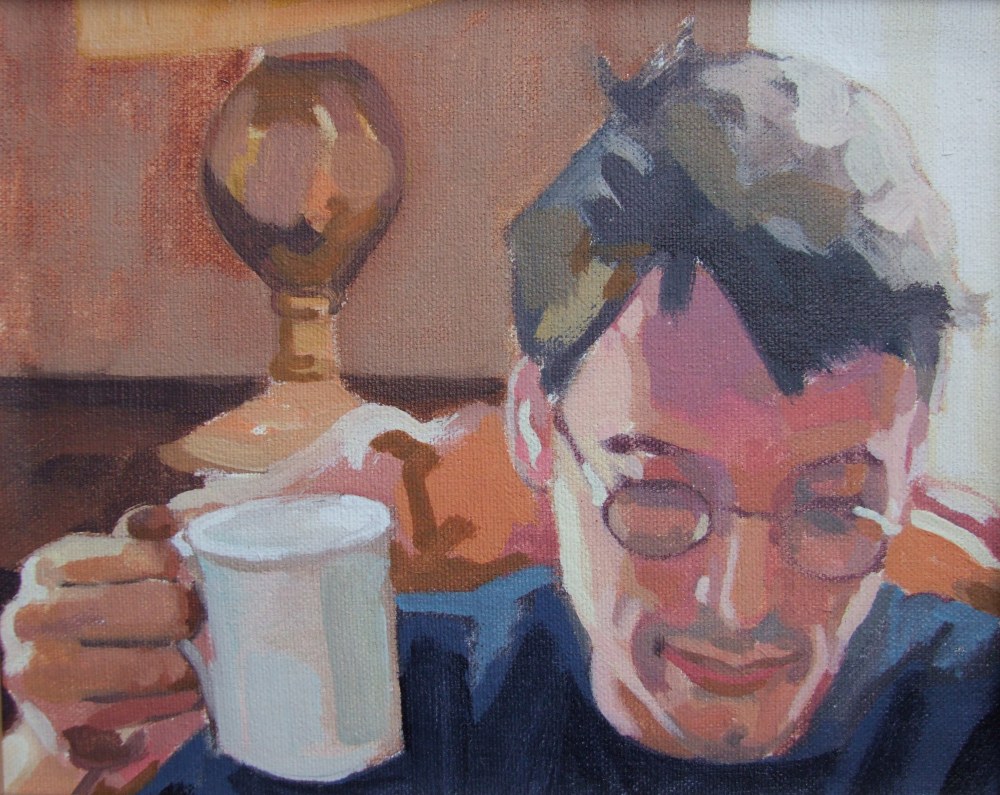 This is a portrait I painted of my brother Tom a few years ago, and I wanted to share it as I love the composition. I don’t know if its obvious but he’s reading, and enjoying a cup of tea at home. I feel the composition of the painting has a compactness to it, whilst having three distinct spatial areas – himself in the foreground, the room behind, and the window and world outside. There’s also the added dimension of the other window on his right, shedding light on his hand and cheek. And you could include the space I sat and painted in. I think I spent an hour or so on it and it was a good likeness, so decided to leave it as it was.
This is a portrait I painted of my brother Tom a few years ago, and I wanted to share it as I love the composition. I don’t know if its obvious but he’s reading, and enjoying a cup of tea at home. I feel the composition of the painting has a compactness to it, whilst having three distinct spatial areas – himself in the foreground, the room behind, and the window and world outside. There’s also the added dimension of the other window on his right, shedding light on his hand and cheek. And you could include the space I sat and painted in. I think I spent an hour or so on it and it was a good likeness, so decided to leave it as it was.
I was quite free with colour at the time and that’s something I want to renew and develop further, as another discipline to complement grisaille painting. I think some of the paintings I made in the years before I learned traditional techniques have a freedom and spontaneity that I don’t want to lose sight of. I’ll share more of these on this blog soon.
I’m hoping to start going a drop-in life class to specifically do some oil sketches and Alla Prima portraits so we’ll see how that goes. As I post this I will be at a portrait class in Topsham, Devon, and I will post again about it. Alla Prima is a technique I’ve had a little instruction in, but I’m feeling the need to go back to Bristol to have a chat with James Scrase about it. I’ve mentioned before but he worked for and trained under Pietro Annigoni, so he knows what he’s talking about! Alla Prima is Italian for ‘first attempt’ and is also called wet-on-wet. You basically try and finish the painting in a sitting, rather than painting layers of oil paint on top of paint that has been allowed to dry. I’d love to do one of Louis Smith’s courses on it as he provides brilliant tuition in all things academic in oil painting and portraiture.
Jack in Burnt Umber and Titanium White
Posted on July 30, 2017
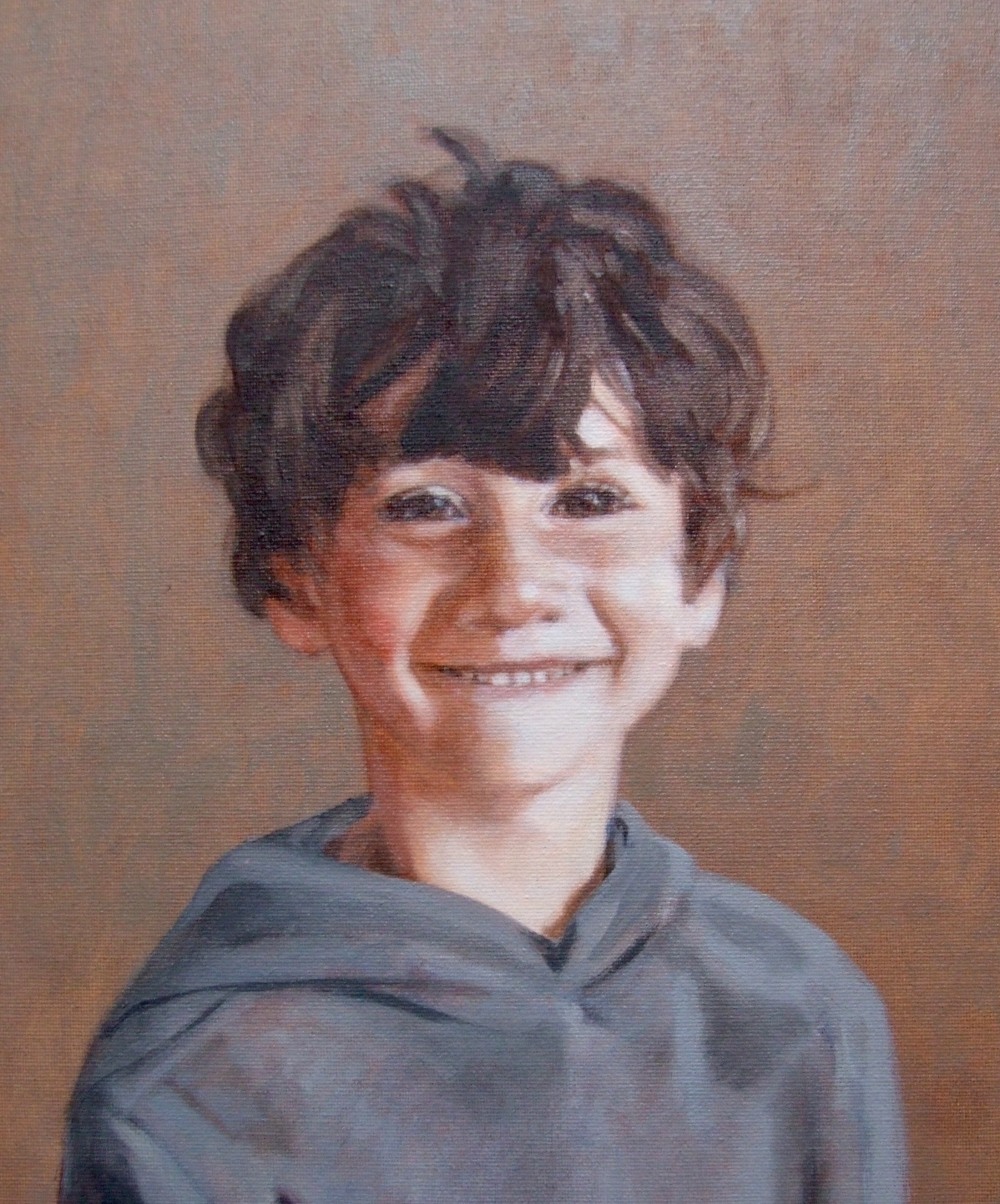
Jack, oil on canvas. Glazes over a burnt umber underpainting
When I began investigating Old Master techniques I had some brilliant instruction from James Scrase, a portrait painter who was trained by Pietro Annigoni (see his fantastic self portrait). He learned every traditional painting skill from Annigoni, including fresco painting, and he taught me to use Burnt Umber as a wash to draw the portrait first, and then build up layers of slightly opaque ‘half-pastes’ using colour and a little white. Also I was taught to add white with small amounts of blue and then glaze over it with flesh tones. This was one of my first attempts, of my cousin Jack. Of late I have been focussing on a strict grisaille underpainting but looking at this I think I prefer the slightly more fluid quality burnt umber can achieve with thinner washes.
Drawing practice
Posted on July 21, 2017
The most intense ‘drawing’ experience I have had is when I am carving directly into marble. This piece was done from photos with some simple measurements I took with a set of callipers as a guide (not easy with a baby – generally done while she was asleep!) With marble carving any wrong move would ruin the whole thing and a months work, making it pretty stressful but a great discipline. Because of that pressure I think I improved my ‘looking’. For me drawing is about making a mark, and then checking it, and checking again, and deeply looking at the subject. I even feel that the depth of the looking etches the subjectivity of the artist on the media they are working, be it drawing, painting or sculpture. I don’t know what that subjectivity is but its an emotion, and its possible to embody that emotion in a work of art. Making a sculpture in the round is like doing hundreds of drawings simultaneously. Without drawing, or when the drawing is lacking, the painting’s ruined.
In my experience CUTTING CORNERS with drawing is the biggest waste of time and I have probably wasted YEARS of my life throwing good after bad in paintings, going over and over attempting corrections when all the effort could have been saved with earlier checks. Its the ultimate false economy..
‘Drawing includes three and a half quarters of the content of painting… Drawing contains everything, except the hue’. (Jean-Auguste-Dominique Ingres) from Art Quotes
Revelation with colour glazing
Posted on May 31, 2017
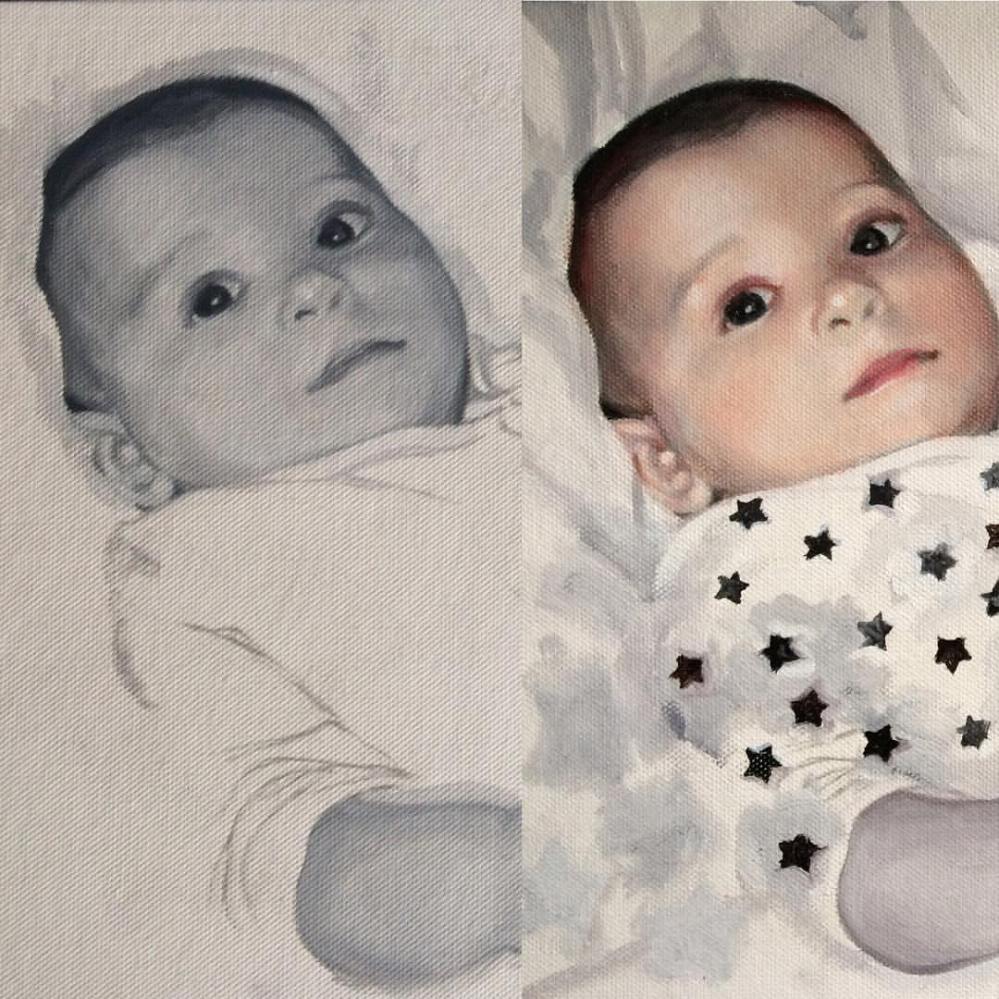 One of the most important things that has happened to me in all the years I have been portrait painting was going on a course run by Louis Smith in 2014, learning about glazing. Looking at his website I thought this would be about glazing as I understood it where you have a very thin translucent layer of paint and you go over a grey underpainting, or dead layer, like Caravaggio or Ingres. We learned to glaze over an underpainting, but the glazes felt more like ‘half-pastes’ as they were not entirely transparent. Even so it transformed the way I approached colour mixing for portrait paintings, and I learned amazing colour combinations of reds and greens which are now the foundation of my approach to painting a face. I’ll write about them in another blog post. I found out about Louis Smith from Jonathan Jones, the Guardian newspaper art critic.
One of the most important things that has happened to me in all the years I have been portrait painting was going on a course run by Louis Smith in 2014, learning about glazing. Looking at his website I thought this would be about glazing as I understood it where you have a very thin translucent layer of paint and you go over a grey underpainting, or dead layer, like Caravaggio or Ingres. We learned to glaze over an underpainting, but the glazes felt more like ‘half-pastes’ as they were not entirely transparent. Even so it transformed the way I approached colour mixing for portrait paintings, and I learned amazing colour combinations of reds and greens which are now the foundation of my approach to painting a face. I’ll write about them in another blog post. I found out about Louis Smith from Jonathan Jones, the Guardian newspaper art critic.
On the course, which was over a weekend, we used a monochrome print from another portrait and went step by step through the process of building up areas of colour, slowly refining and blending each.

